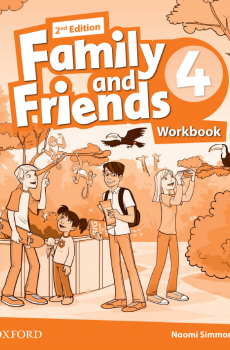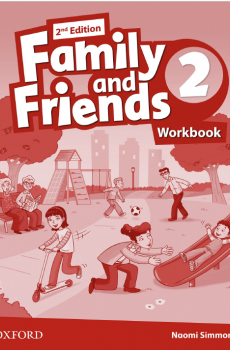How to Listen to Music, 7th ed.
How to Listen to Music, 7th ed.
Log in to download this book.
| Publisher | New York |
|---|---|
| Accessible book producer | Public domain |
| Published year | 2006 |
| Coppy right | Chưa rõ |
CONTENTS
AUTHOR'S NOTE
Chap. I.
Introduction
Purpose and scope of this book—Not written for professional musicians, but for untaught lovers of the art—neither for careless seekers after diversion unless they be willing to accept a higher conception of what "entertainment" means—The capacity properly to listen to music as a touchstone of musical talent—It is rarely found in popular concert-rooms—Travellers who do not see and listeners who do not hear—Music is of all the arts that which is practised most and thought about least—Popular ignorance of the art caused by the lack of an object for comparison—How simple terms are confounded by literary men—Blunders by Tennyson, Lamb, Coleridge, Mrs. Harriet Beecher Stowe, F. Hopkinson Smith, Brander Matthews, and others—A warning against pedants and rhapsodists.
Chap. II.
Recognition of Musical Elements
The dual nature of music—Sense-perception, fancy, and imagination—Recognition of Design as Form in its primary stages—The crude materials of music—The co-ordination of tones—Rudimentary analysis of Form—Comparison, as in other arts, not possible—Recognition of the fundamental elements—Melody, Harmony, and [Pg x]Rhythm—The value of memory—The need of an intermediary—Familiar music best liked—Interrelation of the elements—Repetition the fundamental principle of Form—Motives, Phrases, and Periods—A Creole folk-tune analyzed—Repetition at the base of poetic forms—Refrain and Parallelism—Key-relationship as a bond of union—Symphonic unity illustrated in examples from Beethoven—The C minor symphony and "Appassionata" sonata—The Concerto in G major—The Seventh and Ninth symphonies.
Chap. III.
The Content and Kinds of Music
How far it is necessary for the listener to go into musical philosophy—Intelligent hearing not conditioned upon it—Man's individual relationship to the art—Musicians proceed on the theory that feelings are the content of music—The search for pictures and stories condemned—How composers hear and judge—Definitions of the capacity of music by Wagner, Hauptmann, and Mendelssohn—An utterance by Herbert Spencer—Music as a language—Absolute music and Programme music—The content of all true art works—Chamber music—Meaning and origin of the term—Haydn the servant of a Prince—The characteristics of Chamber music—Pure thought, lofty imagination, and deep learning—Its chastity—Sympathy between performers and listeners essential to its enjoyment—A correct definition of Programme music—Programme music defended—The value of titles and superscriptions—Judgment upon it must, however, go to the music, not the commentary—Subjects that are unfit for music—Kinds of Programme music—Imitative music—How the music of birds has been utilized—The cuckoo of nature and Beethoven's cuckoo—Cock and hen in a seventeenth century composition—Rameau's pullet—The German quail—Music that is descriptive by suggestion—External and internal attributes—Fancy and Imagination—Harmony and the major [Pg xi]and minor mode—Association of ideas—Movement delineated—Handel's frogs—Water in the "Hebrides" overture and "Ocean" symphony—Height and depth illustrated by acute and grave tones—Beethoven's illustration of distance—His rule enforced—Classical and Romantic music—Genesis of the terms—What they mean in literature—Archbishop Trench on classical books—The author's definitions of both terms in music—Classicism as the conservative principle, Romanticism as the progressive, regenerative, and creative—A contest which stimulates life.
Chap. IV.
The Modern Orchestra
Importance of the instrumental band—Some things that can be learned by its study—The orchestral choirs—Disposition of the players—Model bands compared—Development of instrumental music—The extent of an orchestra's register—The Strings: Violin, Viola, Violoncello, and Double-bass—Effects produced by changes in manipulation—The wood-winds: Flute, Oboe, English horn, Bassoon, Clarinet—The Brass: French Horn, Trumpet and Cornet, Trombone, Tuba—The Drums—The Conductor—Rise of the modern interpreter—The need of him—His methods—Scores and Score-reading.
Chap. V.
At an Orchestral Concert
"Classical" and "Popular" as generally conceived—Symphony Orchestras and Military bands—The higher forms in music as exemplified at a classical concert—Symphonies, Overtures, Symphonic Poems, Concertos, etc.—A Symphony not a union of unrelated parts—History of the name—The Sonata form and cyclical compositions—The bond of union between the divisions of a Symphony—Material [Pg xii]and spiritual links—The first movement and the sonata form—"Exposition, illustration, and repetition"—The subjects and their treatment—Keys and nomenclature of the Symphony—The Adagio or second movement—The Scherzo and its relation to the Minuet—The Finale and the Rondo form—The latter illustrated in outline by a poem—Modifications of the symphonic form by Beethoven, Schumann, Berlioz, Mendelssohn, Liszt, Saint-Saëns and Dvořák—Augmentation of the forces—Symphonies with voices—The Symphonic Poem—Its three characteristics—Concertos and Cadenzas—M. Ysaye's opinion of the latter—Designations in Chamber music—The Overture and its descendants—Smaller forms: Serenades, Fantasias, Rhapsodies, Variations, Operatic Excerpts.
Chap. VI.
At a Pianoforte Recital
The Popularity of Pianoforte music exemplified in M. Paderewski's recitals—The instrument—A universal medium of music study—Its defects and merits contrasted—Not a perfect melody instrument—Value of the percussive element—Technique; the false and the true estimate of its value—Pianoforte literature as illustrated in recitals—Its division, for the purposes of this study, into four periods: Classic, Classic-romantic, Romantic, and Bravura—Precursors of the Pianoforte—The Clavichord and Harpsichord, and the music composed for them—Peculiarities of Bach's style—His Romanticism—Scarlatti's Sonatas—The Suite and its constituents—Allemande, Courante, Sarabande, Gigue, Minuet, and Gavotte—The technique of the period—How Bach and Handel played—Beethoven and the Sonata—Mozart and Beethoven as pianists—The Romantic composers—Schumann and Chopin and the forms used by them—Schumann and Jean Paul—Chopin's Preludes, Études, Nocturnes, Ballades, Polonaises, Mazurkas, [Pg xiii]Krakowiak—The technique of the Romantic period—"Idiomatic" pianoforte music—Development of the instrument—The Pedal and its use—Liszt and his Hungarian Rhapsodies.
Chap. VII.
At the Opera
Instability of popular taste in respect of operas—Our lists seldom extend back of the present century—The people of to-day as indifferent as those of two centuries ago to the language used—Use and abuse of foreign languages—The Opera defended as an art-form—Its origin in the Greek tragedies—Why music is the language of emotion—A scientific explanation—Herbert Spencer's laws—Efforts of Florentine scholars to revive the classic tragedy result in the invention of the lyric drama—The various kinds of Opera: Opera seria, Opera buffa, Opera semiseria, French grand Opéra, and Opéra comique—Operettas and musical farces—Romantic Opera—A popular conception of German opera—A return to the old terminology led by Wagner—The recitative: Its nature, aims, and capacities—The change from speech to song—The arioso style, the accompanied recitative and the aria—Music and dramatic action—Emancipation from set forms—The orchestra—The decay of singing—Feats of the masters of the Roman school and La Bastardella—Degeneracy of the Opera of their day—Singers who have been heard in New York—Two generations of singers compared—Grisi, Jenny Lind, Sontag, La Grange, Piccolomini, Adelina Patti, Nilsson, Sembrich, Lucca, Gerster, Lehmann, Melba, Eames, Calvé, Mario, Jean and Edouard de Reszke—Wagner and his works—Operas and lyric dramas—Wagner's return to the principles of the Florentine reformers—Interdependence of elements in a lyric drama—Forms and the endless melody—The Typical Phrases: How they should be studied.
Chap. VIII.
Choirs and Choral Music
Value of chorus singing in musical culture—Schumann's advice to students—Choristers and instrumentalists—Amateurs and professionals—Oratorio and Männergesang—The choirs of Handel and Bach—Glee Unions, Male Clubs, and Women's Choirs—Boys' voices not adapted to modern music—Mixed choirs—American Origin of amateur singing societies—Priority over Germany—The size of choirs—Large numbers not essential—How choirs are divided—Antiphonal effects—Excellence in choir singing—Precision, intonation, expression, balance of tone, enunciation, pronunciation, declamation—The cause of monotony in Oratorio performances—A capella music—Genesis of modern hymnology—Influence of Luther and the Germans—Use of popular melodies by composers—The chorale—Preservation of the severe style of writing in choral music—Palestrina and Bach—A study of their styles—Latin and Teuton—Church and individual—Motets and Church Cantatas—The Passions—The Oratorio—Sacred opera and Cantata—Epic and Drama—Characteristic and descriptive music—The Mass: Its secularization and musical development—The dramatic tendency illustrated in Beethoven and Berlioz.
Chap. IX.
Musician, Critic and Public
Criticism justified—Relationship between Musician, Critic and Public—To end the conflict between them would result in stagnation—How the Critic might escape—The Musician prefers to appeal to the public rather than to the Critic—Why this is so—Ignorance as a safeguard against and promoter of conservatism—Wagner and Haydn—The Critic as the enemy of the charlatan—Temptations [Pg xv]to which he is exposed—Value of popular approbation—Schumann's aphorisms—The Public neither bad judges nor good critics—The Critic's duty is to guide popular judgment—Fickleness of the people's opinions—Taste and judgment not a birthright—The necessity of antecedent study—The Critic's responsibility—Not always that toward the Musician which the latter thinks—How the newspaper can work for good—Must the Critic be a Musician?—Pedants and Rhapsodists—Demonstrable facts in criticism—The folly and viciousness of foolish rhapsody—The Rev. Mr. Haweis cited—Ernst's violin—Intelligent rhapsody approved—Dr. John Brown on Beethoven—The Critic's duty.












